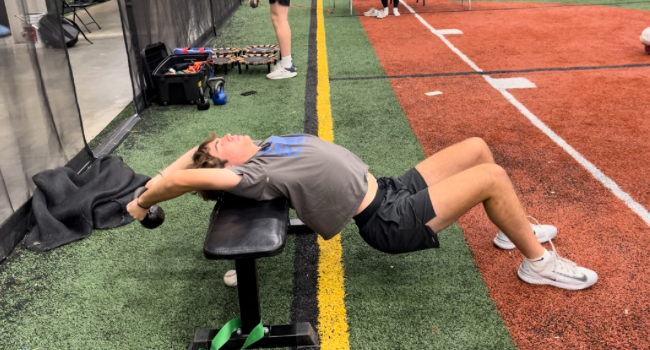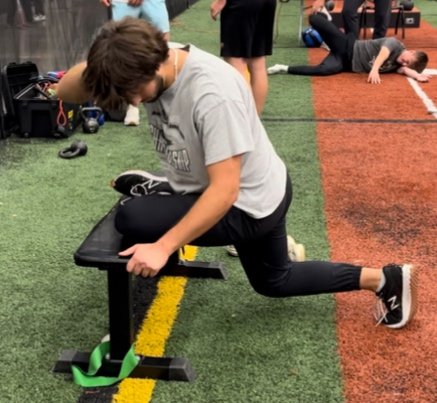Movement Screens Affecting Pitchers
INTRO
The movement screening is one of the first things all high school, college and professional pitchers go through here at PRP Baseball. This movement screening has become very useful for all of our trainers and athletes to know and use on a daily basis, but why is it so important?
These seventeen tests every athlete goes through gives us a multitude of information:
Are there parts of the body that do not move well and can lead to potential future injuries?
What are the athlete’s natural biases and does their delivery properly use these biases?
If we want to change a certain part of their delivery, do they have the physical capacity to actually make that change?
We do not run a movement screening just to say we have one. It supplements every athlete’s planning and goals to make sure they are on the right path to success when it comes to changes we potentially want to make.
So, how can we use these results to answer the earlier questions?
ACTION
Injury Prevention
For the most part, injuries are an almost unpredictable event that occurs as there are a multitude of factors that come into play to cause an injury. For pitchers, it’s a combination of mobility, strength, throwing mechanics, velocity, etc. Trying to predict an injury while looking at just one of these variables is nearly impossible without looking at how every variable affects each other, but you can see things that may lead to future issues.
With the movement screening, you can see deficits in the body that could lead to one and need to be adjusted. This can come in one of two ways: muscles/joints that either do not have a good range of motion, or do not have adequate stability in the range of motion they have access to.
Take, for example, a hamstring that is extremely tight and has little range is generally more at risk to a muscle strain than one that has more length already. Or if an ankle has a lot of range in inversion/eversion then it can move around easier and hold ground better at different angles, but if it lacks in stability or strength then it is more susceptible to ankle sprains.
The movement screening can show you where these imbalances are, so we can attack specific prep work with the athlete to try to mitigate any potential risk they have.
Natural Movements and Biases
At this point most training facilities and their trainers recognize that not only does every player throw and hit differently, but their bodies are built and naturally move in their own ways. This requires athletes to be treated individually instead of placed into a cookie cutter program. That includes a mobility/movement prep program that we have.
Since players already have their own natural movement and biases, it’s important to keep note of them to let the athlete know of their goals in the prep work. Some players need more of a focus on developing better end range stability during their exercises, some need more range in the movement overall, and others need a combination of the two. These should be set to help achieve the ultimate end goal – moving better in their sport-specific movements.
Pitchers should be using their own natural movements to their advantage during the delivery. Doing so helps keep athleticism, fluidity, and authenticity while striving to increase overall efficiency throughout. Keep in mind that most players will have compensations that occur during their movement, but are these compensations making them more or less efficient?
Hip internal and external rotation are one of the biggest tests we take into consideration during this. Both IR and ER need range and strength in both hips. The rear hip needs ER to be able to hold tension longer and prevent early rotation and it needs IR to be able to effectively fire and rotate the hips through. The lead hip needs ER to properly let the rear hip clear all the way through, but needs IR to fully decelerate the pelvis so that the energy created can be transferred up the chain to the spine and torso.
Each athlete has a certain range of internal and external rotation in each hip socket that influences their movements.
If they pass both IR tests and fail both ER tests, then we can classify this athlete as a hip IR dominant mover. This means the athlete will most likely have more success trying to hold more IR tension in the pelvis during the stride move down the mound and at landing.
They tend to do better at trying to coil their hips, front foot might land more closed off than normal, and can potentially thrive with a cross-body stride.
Now let’s flip to an athlete that fails both IR tests and passes both ER tests, they are going to be classified as a hip ER dominant mover. Their move down the mound and into landing will probably be more successful holding more ER tension in the pelvis.
They may struggle with trying to hold any sort of coil into the back hip, front foot will likely land with the toes facing almost directly at their target, and their stride will be more in-line or slightly open down the mound. There are always exceptions to these trends, and never any absolutes.
Changes to the Delivery
Whenever people talk about some of the best pitchers of all time they usually have one thing in common: they all use the absolute most of what their body allows them to. There are no forced actions, or trying to create movements that their body is physically unable to perform.
Taking a holistic point of view to understand the goals each athlete needs to achieve in their delivery can also help with your decisions. This is where cross checking their movement screening during the mechanical breakdown comes in handy. The player can also understand what their biggest energy leaks are and whether it is a learning skill issue (using a natural bias more and improving energy flow), or a physical limitation issue (lacking range or stability to perform a movement that helps the delivery).
Once the leaks are identified, all that is left is setting up the plan of attack to make these changes. Every athlete has specific prep work that they go through at the beginning of each session to improve any physical limitations they may have. After they finish the prep work and their warm up, players will then start their drill work to help with the actual mechanical and output side of the delivery. Between their attack plans and athlete buy-in every day, improvements and success are quick to follow.
WRITTEN BY NICK SLONE






